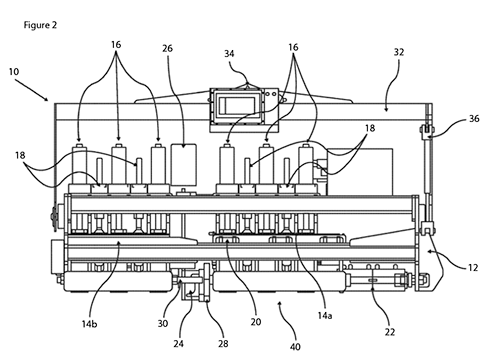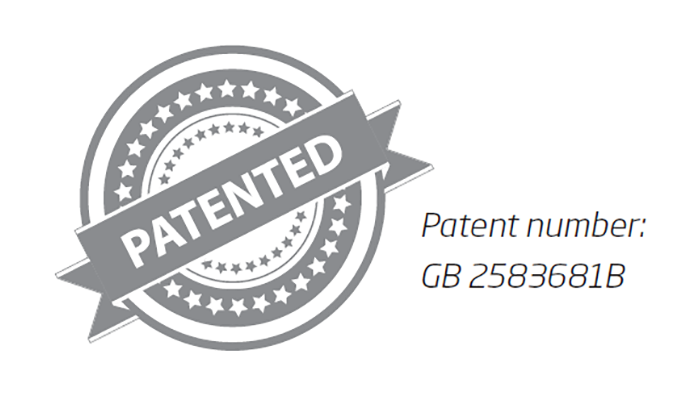Innovative Induction Welding Device Revolutionizes Rail Joint Technology
In an ideal world, railway lines would be constructed as continuous single lengths of track smoothly spanning vast distances without the need for joints. However, due to the obvious logistical issues that such a track would create, railway lines are instead constructed from a series of sequential rails, which all need to be joined together. In the UK, a kilometer of track is likely to include between 50 and 100 joints between adjacent track sections.
Whilst railway lines must be constructed as a series of sequential rails, it is preferable for each joint to ‘mimic’ a continuous length of track as closely as possible. Any imperfections between neighboring rails impact the smoothness of the journey and the speed at which trains can travel along a given length of track.
Traditionally, fishplates (a metal bar which can be bolted to adjacent ends of neighboring rails) have been used to join adjacent sections of track. However, the use of fishplates results in a small gap between rails, adversely affecting ride smoothness and speed, due to the risk of derailment.
A preferable alternative to fishplates is a continuous (or close to continuous) joint between sections of track, typically made by welding. Improved ride smoothness can be achieved, and trains can travel at greater speed.
Existing welding techniques include methods such as thermic welding or flash-butt welding. However, thermic welding often produces welds which are significantly weaker than the adjacent rails, while flash-butt welding can result in poor rail alignment and is difficult to perform if the electrical contact between adjacent rails is insufficient. Both methods can also be hazardous due to inherent fire risks associated with these techniques.
A possible solution (or just a Mirage?)
Mirage Ltd, a bespoke machinery and engineering company based in Stoke-on-Trent, has recently been granted a UK patent (GB 2583681B) for an induction welding device designed to provide a smooth and continuous joint between adjacent rails, without weakness.
The device makes use of electromagnetic induction to heat adjacent ends of neighboring rails before forcing the rail ends together to form a smooth and continuous weld.
As shown in the figure below, the device is made up of a pair of clamping/lifting modules (14a, 14b) designed to engage with corresponding sections of track. At least one of the lifting modules (in this case the right-hand module 14a) is movable relative to the other via a pneumatic or hydraulic ram (22). An  induction heating device (24) is interposed between the two modules for heating adjacent ends of track received in the respective modules.
induction heating device (24) is interposed between the two modules for heating adjacent ends of track received in the respective modules.
Once the device (10) has been transported to site, the hydraulic ram is retracted and each of the lifting modules are engaged with a corresponding section of track.
These are designed to clamp sections of rails about their webs and, since the lifting modules are already aligned, upon engagement the end faces of the rails will become aligned to one another. Once the adjacent sections of track have been properly aligned, the induction heating device is activated to bring the rail ends up to a desired welding temperature.
When this has been reached, the hydraulic ram is activated to force the rail ends together. As the molten ends come into contact, a continuous weld is formed between the adjacent rail sections.
Benefits of a UK patent
Whilst induction welding is a known technology, in this case the provision of a new, innovative device to allow it to be more successfully adopted by the rail industry was sufficient for a patent to be granted.
This goes to show that it is not only radical new concepts which can be patented. Practical innovations that enable existing technologies to be applied to new fields, or even improvements to existing products, systems and processes are all potentially patentable innovations.
By obtaining UK patent protection for this invention, Mirage will be able to market it within the UK on an exclusive basis and will have the right to prevent competitors from copying it. Further down the line, depending on industry take-up, Mirage may choose to license its invention to third parties, allowing it to benefit from royalty payments.
In addition, the UK Government’s Patent Box Tax Relief Scheme allows companies to reduce their rate of corporation tax on profits resulting from qualifying intellectual property to just ten percent providing another commercial benefit.
Mirage’s patented mobile induction welding head has already been successfully prototyped and is scheduled for acceptance by Network Rail in September of this year. Therefore, it is likely the UK will see an increased uptake of induction welding in the rail industry in years to come.
 Nicola Anderson is senior associate and patent attorney in the Advanced Engineering group at European intellectual property firm, Withers & Rogers. Established in 1884, Withers & Rogers LLP is a leading European intellectual property (IP) firm providing expert advice on the protection and enforcement of IP rights particularly for inventions, designs and trademarks. Reflecting the firm’s distinctive entrepreneurial personality, its patent and trade mark attorneys come with a depth of specialist understanding and pride themselves on helping businesses to commercialize their IP.
Nicola Anderson is senior associate and patent attorney in the Advanced Engineering group at European intellectual property firm, Withers & Rogers. Established in 1884, Withers & Rogers LLP is a leading European intellectual property (IP) firm providing expert advice on the protection and enforcement of IP rights particularly for inventions, designs and trademarks. Reflecting the firm’s distinctive entrepreneurial personality, its patent and trade mark attorneys come with a depth of specialist understanding and pride themselves on helping businesses to commercialize their IP.
www.withersrogers.com
